
The first paragraph of a recent news release about the setting up of
yesterday.sg is reproduced below. It gives the background to this post:
"Come 1 March 2006, a new virtual space for heritage and museum enthusiasts - yesterday.sg - will enrich the blogosphere. An initiative of the Museum Roundtable (MR), yesterday.sg is an interest-based blog on Singapore's heritage and museums. With a rich repository of posts by heritage enthusiasts, museum aficionados, and nostalgia fans, visitors can tune into heritage happenings, explore Singapore's close to 40 museums, and indulge in personal tales from the past. They can share their adventures, discover quirky facts, and offer insights on never-before-heard nuggets of Singapore's history."
Early this year, I was invited to be a Friend of yesterday.sg. A Friend, as I understand it to be, is one of the 'founding members' of yesterday.sg who has written or will write articles about heritage or nostalgia concerning Singapore for posting on yesterday.sg. I have accepted the invitation to be a Friend. In connection with the launch of yesterday.sg, the media have interviewed a few Friends, including yours truly. However, no details of my e-mail interview made it to print. I would like to think that the reason for not publishing any details of my interview was more due to (newspaper) space constraint rather than what I said was not newsworthy. (Haha, for once, I am being positive.)
Fortunately in this blogging age, who needs newspaper space to air one's opinions? Readers may disagree with my opinions but nobody can gag me on my own blog. My interview still gets published. Besides, my posting of the interview on my blog is to prove that I spoke no evil of anyone. (Alright, if I did, it was only in jest.) Instead, I gave credit when credit is due. Moreover, I spent a few hours preparing my responses to the interview so it would be a waste to let them vanish without a trace. So here goes:
1. How did you get started in blogging? Was it difficult, technical-wise?
In May last year, my good friend and colleague
Chris started a blog and challenged me to start one too. At first, I was reluctant to do so but Chris was very persistent. (He must have used the same dogged determination to woo his wife too.) I relented eventually. That is why my blog is titled 'Taking Up the Challenge' and the banner reads, "My answer to Chris' challenge for this old dog (that's me) to blog. I am intent on showing Chris that 'every old dog could do a good blog'." More details on how I get started in blogging could be found in two of my earlier posts on
victorkoo.blogspot.com. (Sorry, I cannot resist doing some commercial.)
I would not say that it was a piece of cake when I first started blogging. However, it was also not so technically difficult that I could not overcome it. In the next few months, I attended courses such as Web Design and Digital Imaging. These courses taught me how to use HTML codes to enhance my blog and how to add special effects to my photos. My employer sponsored the courses as I needed to use quite a bit of IT skills in my job. Of course, Chris gave me some pointers too.
2. Did you get roped into contribute to yesterday.sg, or did you offer your help?
In a way, I was recruited to yesterday.sg. In October last year when I was writing a series titled 'Vanishing Scenes of Singapore', Mr Lam Chun See (of
goodmorningyesterday.blogspot.com fame) discovered my blog. Since then we have become good friends in blogosphere. Then early this year, Mr Shaun Wong of National Heritage Board commented on my blog to request for my e-mail contact. After some further discussion, I was convinced to join yesterday.sg. Based on these circumstances, I believed that it was Chun See who 'squealed on me' but I had no proof.
3. Are your posts on the yesterday.sg blog similar to the posts on your personal blog? If not, do you have to make a specific effort to write something different for the yesterday.sg blog?
I write on a wide range of topics in my personal blog. Besides writing stories on old Singapore occasionally, some examples of topics on my personal blog are grouses about service standards, Unscrupulous Ways of Doing Business, Sexpo 2005, Pulau Ubin, Striving To Be More Positive, and so on. Hence the posts on my personal blog are more varied than my posts on yesterday.sg. It would be correct to say the latter is a subset of the former. I am an incidental heritage blogger and not a full-time one - this was made known to Shaun and he accepted this occasional sleeping partner, without regrets I hope.
4. So far, your posts on yesterday.sg have been titled 'Vanishing Scenes of Singapore'. Why have you chosen to write on this, and are you planning to continue in this vein?
Actually, 'Vanishing Scenes of Singapore' was a 6-part series which I wrote in October last year to fill a void when there was no issue to blog about. At that time, I had not written for some time and Chris was hassling me to 'remove the spider webs from my weblog'. I struck on the idea of writing about vanishing scenes to buy me some time and some reprieve from Chris' pestering. This series of posts would last me quite some time. I will continue to write about old Singapore as long as I still have stories to tell. Besides posts about vanishing scenes, I have written other old stories like my school days, my first car and my first camera.
5. From your blog posts, your tone is quite different from what I'd expect from a 50-year-old blogger (if you don't mind me making such presumptions :) ). It's very different from the usual tone of sombre recollection that other, older bloggers have. Do you intentionally want to set yourself apart from them?
I take that to be a compliment, that is about being different and not about being 50. I like to write humourously and accompany my posts with lots of photos. I hope that by doing so, my posts will be more interesting to read. I try to make my posts light-hearted as after all, I believe that one of the purposes of a blog is to entertain and not just to inform. This is not to say that I need little effort in writing my blog that way. I put in quite a lot of effort and time to write my posts and frequently work into the wee hours of the morning. Some of my posts also described how I 'risked life and limb' to take some of the photos, not unlike an investigative journalist.
6. What are the kinds of responses you've received for your blogging, and who usually reads your blog - youngsters or a more matured audience?
I realise that the kinds and ages of readers attracted to my blog depend very much on the topic of the post that I am writing about. These readers probably found my blog by using a blog search on their topics of interest - when I wrote about old Singapore, Chun See commented; when I wrote about Pulau Ubin, Ms Ria Tan (
www.wildsingapore.com) commented; and when I wrote about my car, I was invited to join a
car club. However, I do get younger regular readers too.
Etel and
Evan are two of them, probably due to the credit of Chun See again as they mentioned that they blog-hopped from Chun See's blog.
7. Why do you want to be a part of the yesterday.sg project?
I feel that getting the younger generation to be more interested or at least more aware of our heritage is a very worthwhile cause. I am glad to do my part.
8. How do you think people - both young and old - will respond to it?I think that the initial response has been very encouraging so far. Within a few days of the official launch of yesterday.sg, the site has already garnered more than 30,000 hits which is no mean feat. Quite a few members of the public have been encouraged to blog on yesterday.sg. (I hope that they are not just attracted by the prizes but have a real passion in blogging.) I believe that most of them are middle-aged bloggers but I cannot verify their ages as I do not have their personal details. Older readers may be more reluctant to blog because they may lack the technical skills to do so but this will not hinder them from accessing yesterday.sg just to browse.






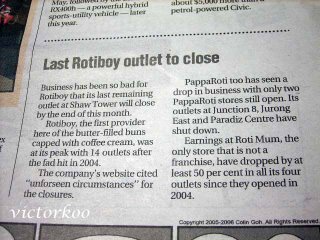 Just months ago, the situation was very different - there was a long queue of people waiting patiently to get their hands on the buns (and their teeth in them). The buns were literally selling like hot cakes. The half a dozen or so staff could not churn out enough buns to satisfy the demand:
Just months ago, the situation was very different - there was a long queue of people waiting patiently to get their hands on the buns (and their teeth in them). The buns were literally selling like hot cakes. The half a dozen or so staff could not churn out enough buns to satisfy the demand: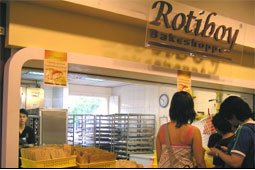
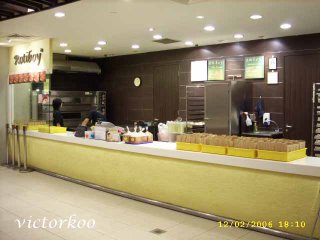

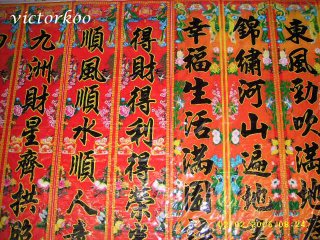


 A sex shop right in the heart of Chinatown? It was a business I least expected to find in an area so full of history, culture and heritage. (By the way, this shop was located quite far away from Keong Saik Road, one of few 'officially sanctioned' red-light districts in Singapore.) I could understand if similar shops like 1836 Fantasy or Secret Affair popped up in vicinity of Geylang, another 'officially recognised' red-light district. But in the last few years, such shops are being set up in places such as swanky Orchard Road, heritage-rich Chinatown and even HDB heartlands such as Woodlands.
A sex shop right in the heart of Chinatown? It was a business I least expected to find in an area so full of history, culture and heritage. (By the way, this shop was located quite far away from Keong Saik Road, one of few 'officially sanctioned' red-light districts in Singapore.) I could understand if similar shops like 1836 Fantasy or Secret Affair popped up in vicinity of Geylang, another 'officially recognised' red-light district. But in the last few years, such shops are being set up in places such as swanky Orchard Road, heritage-rich Chinatown and even HDB heartlands such as Woodlands.










 Riding my chopper, I discovered many interesting facets of Joo Chiat. Sad to say, most of them are no longer there today. Today, Joo Chiat is more well known for its food and food-related businesses, besides its bars and massage parlours, of course.
Riding my chopper, I discovered many interesting facets of Joo Chiat. Sad to say, most of them are no longer there today. Today, Joo Chiat is more well known for its food and food-related businesses, besides its bars and massage parlours, of course.
 Photo 1 - The shop is at 95 Joo Chiat Road. If you are coming from Geylang Serai, the shop is on the left-hand side of the road, just after the junction with Joo Chiat Terrace.
Photo 1 - The shop is at 95 Joo Chiat Road. If you are coming from Geylang Serai, the shop is on the left-hand side of the road, just after the junction with Joo Chiat Terrace.



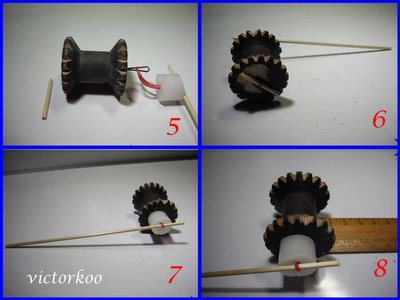

 After presenting me the card, they gave me a miniature cake of, you guessed it, a monkey face. They put one candle on it because that was all the space it had, and proceeded to sing me a Happy Birthday song.
After presenting me the card, they gave me a miniature cake of, you guessed it, a monkey face. They put one candle on it because that was all the space it had, and proceeded to sing me a Happy Birthday song.




